Anthropology
Related: About this forum4,000-Year-Old Stonehenge Of The Netherlands Reveals Its Secrets
AncientPages.com | June 22, 2023
Jan Bartek - AncientPages.com - Dutch archaeologists have unearthed a remarkable ancient structure that has been nicknamed the Stonehenge of the Netherlands".
Scientists say the intriguing 4,000-year-old structure includes a burial mound that served as a solar calendar. Inside the burial mound, archaeologists came across the remains of some 60 men, women, and children had several passages through which the sun directly shone on the longest and shortest days of the year.
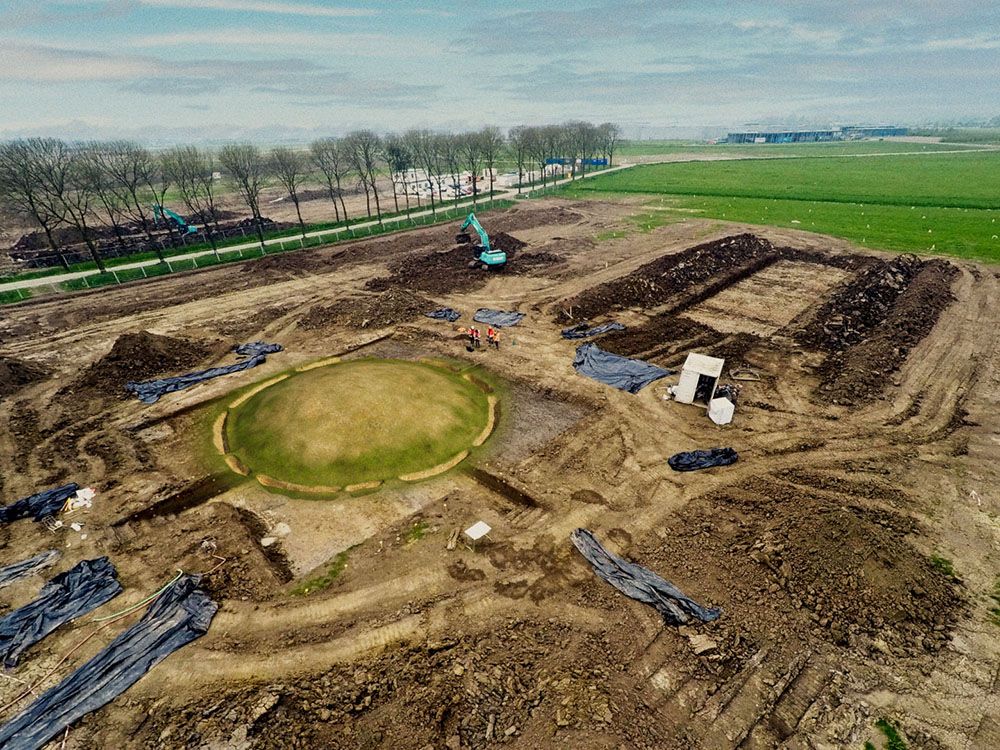
Credit: Gemeente Tiel
“What a spectacular archaeological discovery! Archaeologists have found a 4,000-year-old religious sanctuary on an industrial site.
This is the first time a site like this has been discovered in the Netherlands,” the town of Tiel, where the site was discovered, said on its Facebook page.
. . .
More:
https://www.ancientpages.com/2023/06/22/stonehenge-of-the-netherlands/
(The narration of the YouTube clip is not spoken in English. Sorry.)
~ ~ ~
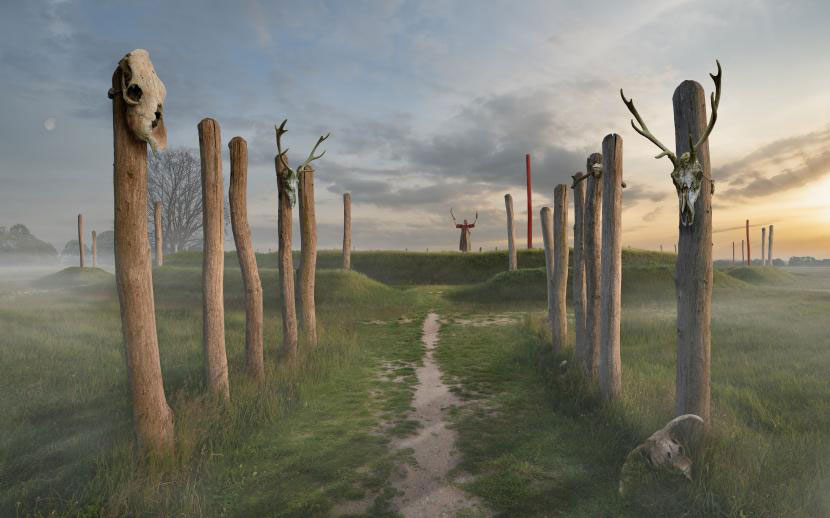
Archaeologists discover 4000 year old sanctuary with solar calendar in Tiel
Nicknamed the “Stonehenge of the Netherlands”
23 Jun 2023
by Archaeology Newsroom A A A
A large sanctuary has been discovered in Tiel that is 4000 years old and was dedicated to the sun, just like in the English Stonehenge. The sanctuary consisted of several mounds of earth, one with a solar calendar, wooden posts, cemeteries and a ritual road. People gathered here for sacrifices, funerals, feasts and rituals. The largest hill served as a kind of solar calendar. The shrine has been in use for 800 years. Among the remarkable finds is a glass bead from Mesopotamia (Iraq); evidence that there were already contacts with people in the Ancient Near East.
The discovery of a sanctuary from the early Bronze Age, 4000 years ago, is unique for the Netherlands. The excavations took place in 2017 at Medel, an industrial estate in the Betuwe municipality of Tiel. It is one of the largest archaeological projects in the Netherlands ever. After years of research, archaeologists recently made this spectacular discovery.
The main mound is about 65 ft in diameter and its passages are lined up to serve as a solar calendar. Humans built it at the end of the Stone Age and the beginning of the Bronze Age, 4,000 years ago.
The largest hill was also a solar calendar at the same time. Next to the shrine were wooden farmhouses. The shrine must have been an important place where people kept track of special days of the year, performed rituals and buried their dead.
More:
https://www.archaeology.wiki/blog/2023/06/23/archaeologists-discover-4000-year-old-sanctuary-with-solar-calendar-in-tiel/
thatcrowwoman
(1,230 posts)Mysteries and biographies and folktales from around the world were my first favorite genres, way back to elementary school.
This blows my mind in a happy way. Wandering, pondering, through time and space.
Many thanks for sharing.![]()
🕊thatcrowwoman
Judi Lynn
(162,406 posts)That pattern is been found in so many places, by now, too. It is mind-boggling, by all means.
Thanks for taking the time to read it, I hope there will be more to come, now, from this area. Now that they've learned about this, no doubt there will be a heightened interest in continuing to search for more.
Every thing they learn about our shared past is a real gift to the present and future.
So glad to see your comment, thatcrowwoman. ![]()
Judi Lynn
(162,406 posts)News
By Laura Geggel published 23 June 2023
Archaeologists have discovered a 4,500-year-old sanctuary in the Netherlands that marks the solstices and equinoxes, and was also used as a burial ground.
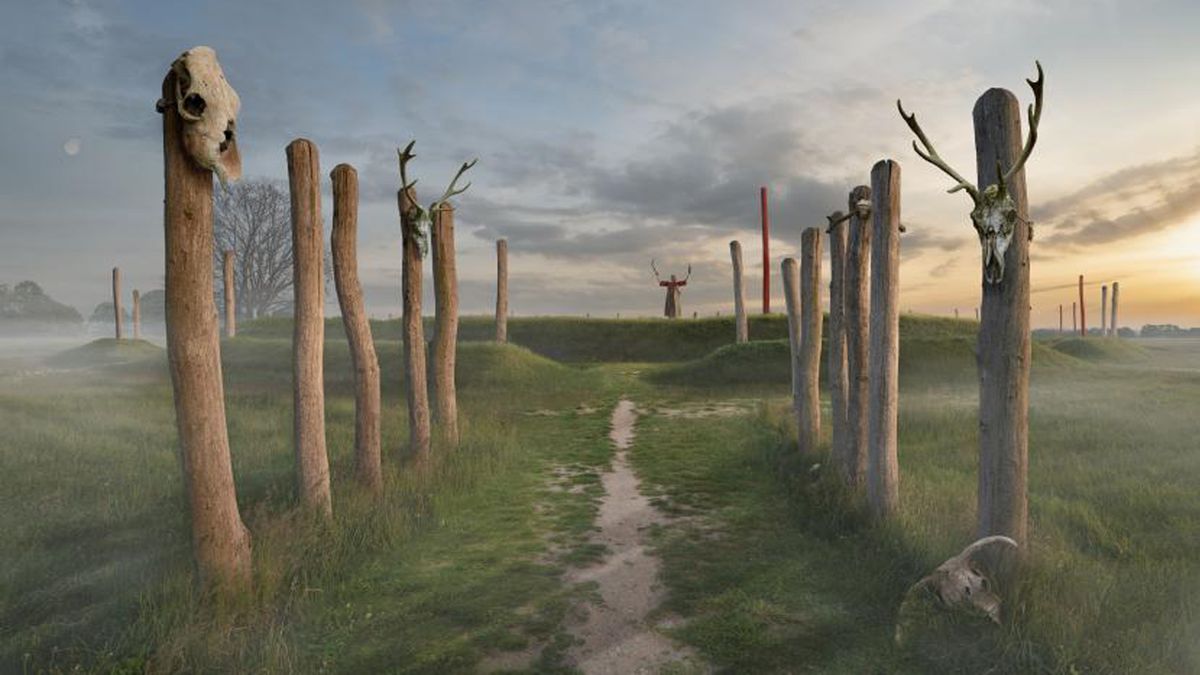
We see an illustration of a shaman in the background on a earthen mound holding up their hands. There are wooden poles with animal skulls making a path to the foreground.
An artist's interpretation of the sanctuary's layout for rituals in what is now the Netherlands. (Image credit: Illustration by Alexander Van de Bunt; Municipality of Tiel)
Archaeologists in the Netherlands have unearthed a 4,500-year-old sanctuary whose earthen mounds align with the sun on solstices and equinoxes. And, just like Stonehenge, the sanctuary was also used for burials and rituals.
People were buried at the sanctuary over a period of 800 years, according to a translated statement from the Municipality of Tiel, where the remnants of mounds, ditches, a flat burial field and a farm were discovered.
The largest of the three mounds holds the remains of men, women and many children who died between about 2500 B.C. and 1200 B.C., the researchers said. Excavators also discovered ancient burials surrounding the sanctuary, making the entire site about 9.4 acres (3.8 hectares), larger than seven American football fields. More than 80 individuals were unearthed at the site; some were buried, and others were cremated, according to the statement, which noted that "these deceased must have played an important role in the rituals."
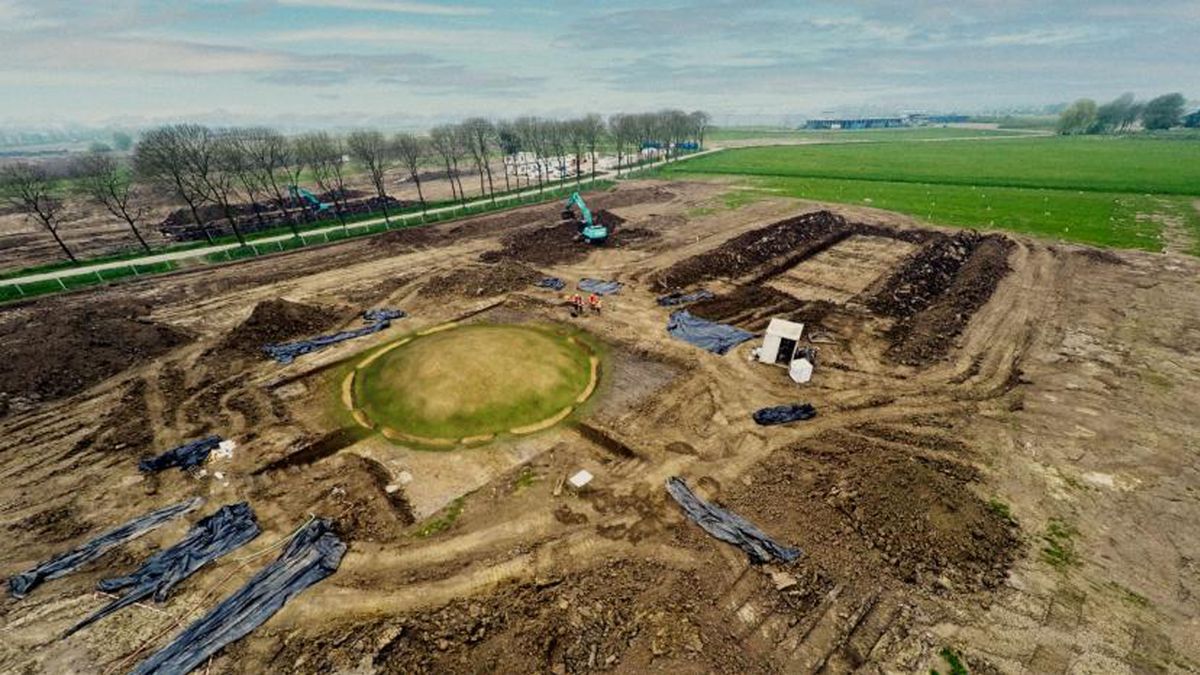
The excavation site with the large burial mound highlighted with a virtual grass overlay. (Image credit: Municipality of Tiel)
Although the sanctuary doesn't have stone boulders like Stonehenge does, it appears that the largest burial mound served as a calendar that helped people mark the sun's movements, the researchers said in a translated statement. For instance, precious artifacts, such as a bronze spearhead, were buried where the sun's rays hit the ground through an opening at the sanctuary.
More:
https://www.livescience.com/archaeology/4500-year-old-stonehenge-sanctuary-discovered-in-the-netherlands
Judi Lynn
(162,406 posts)The ritual site was once used to determine the longest and shortest days of the year
Christopher Parker
Daily Correspondent
June 26, 2023 5:24 p.m.
Archaeologists in the Netherlands have discovered a 4,000-year-old ritual site—and like Stonehenge in Britain, it was used to track the summer and winter solstices.
Stretching across more than nine acres (roughly seven American football fields), the site featured three mounds of soil, which formed pathways for sunlight to shine through on the longest and shortest days of the year. The mounds also held the remains of some 60 adults and children who lived between 2500 and 1200 B.C.E.
“The shrine must have been an important place,” say the researchers in a Google-translated statement from the Dutch municipality of Tiel. “People kept special days in the year, performed rituals and buried their dead.”
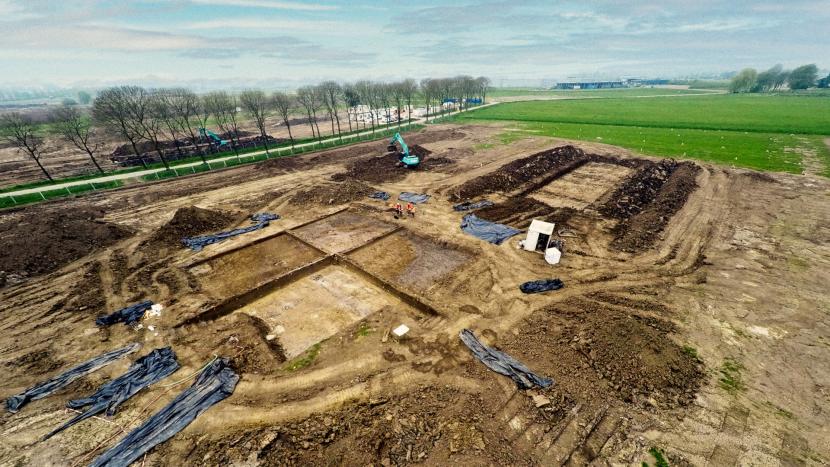
Archaeologists began work in the area starting in 2016, uncovering over a million artifacts. Gemeente Tiel
Unlike Stonehenge, however, no stone monuments remain at the newly discovered site. It was built with wood, which decomposed long ago.
“It is known that farmers have been concerned with the positions of the sun since the Stone Age,” Stijn Arnoldussen, a historian at the Netherlands’ University of Groningen, tells the Dutch broadcaster NOS, per Google Translate. “Yet such a complete, coherent landscape as has now been discovered is not often seen.”
More:
https://www.smithsonianmag.com/smart-news/dutch-stonehenge-solar-calendar-burial-ground-180982430/